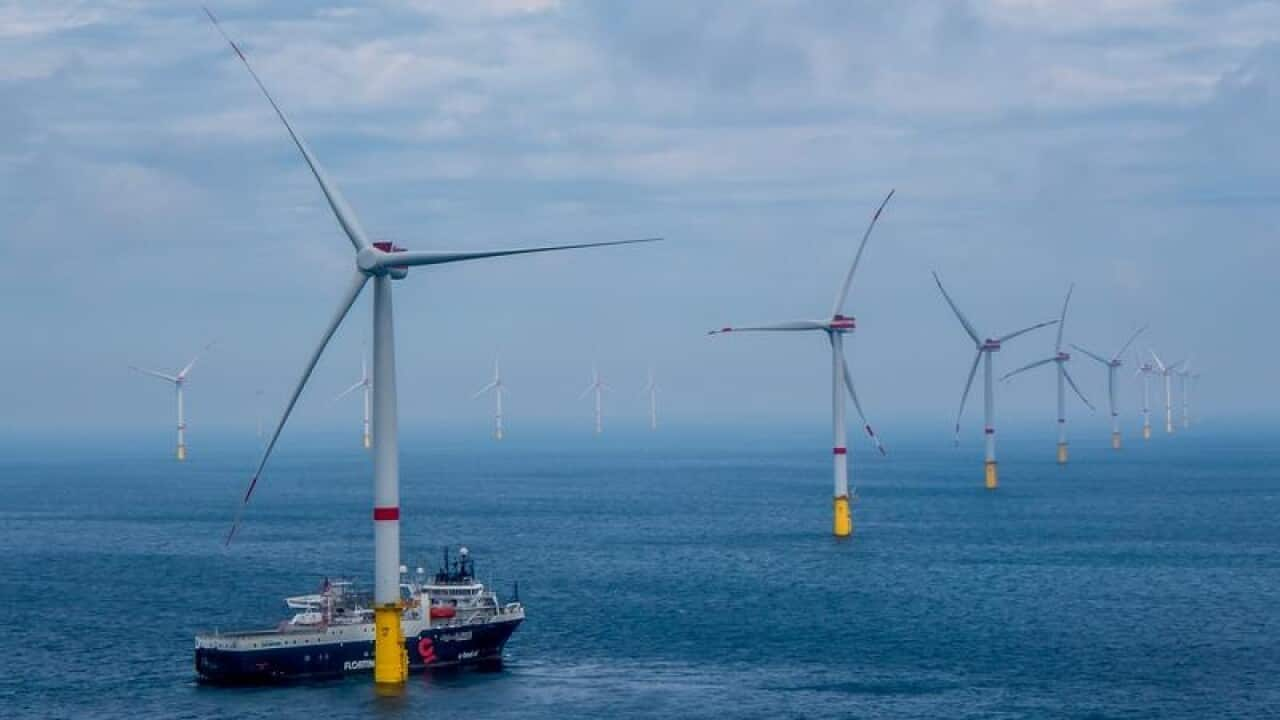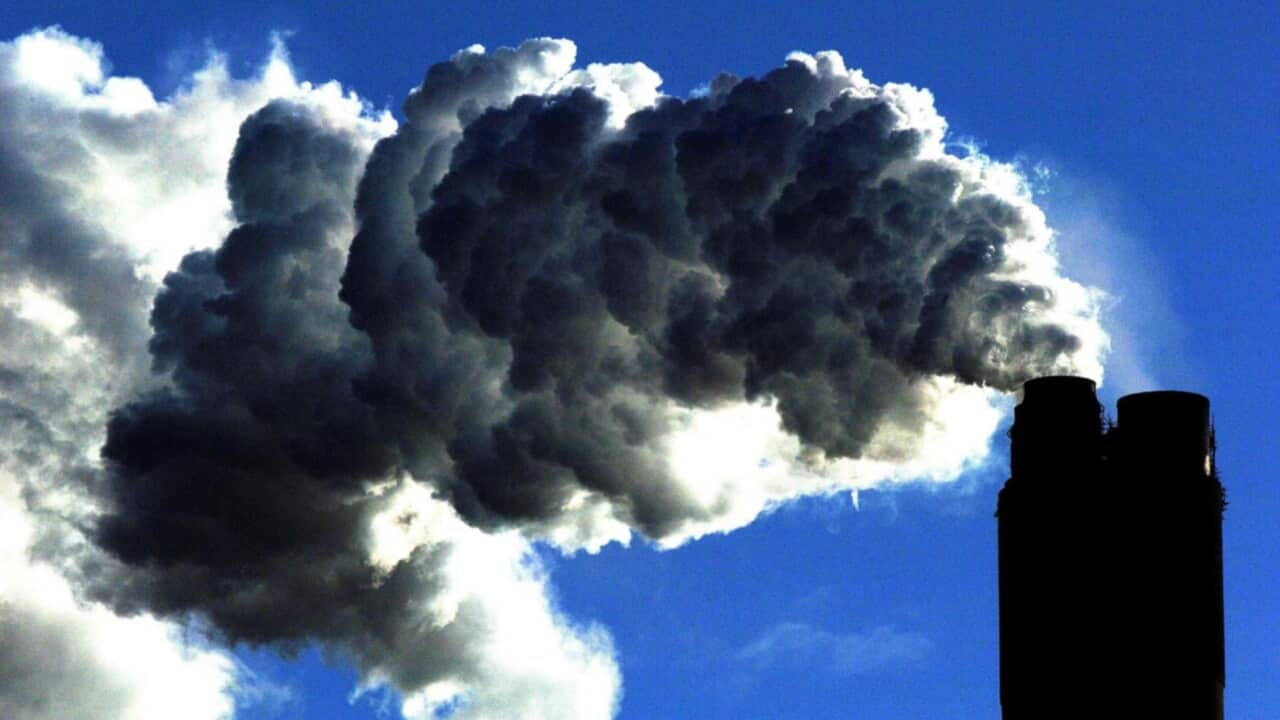Global investment in offshore wind farms is booming as nations seek to cut their greenhouse gas emissions. This week, Australia officially joined the party.
Renewable energy advocates are celebrating the passage of pivotal laws that will govern the installation of towering turbines off the coast in coming years.
They say a new offshore wind power industry will help Australia dump fossil fuels sooner while also creating clean, green jobs in regions that have always depended on coal and gas.
Project proponents are celebrating too.
They now have a framework for the infrastructure they want to build and have expressed a new level of confidence about pursing an industry that's been powering Europe for years.
So what will a new offshore wind industry mean for Australia? Where are plants likely to pop up? What will they look like? And what's on offer in terms of power supply, new jobs and climate action?
So far, there are about a dozen offshore wind farm proposals on the drawing board.
Most will hug a coastal path from just north of Sydney, past Melbourne and hook around towards Adelaide. There's also one planned off northern Tasmania and there are three proposed for Western Australia, one near Geraldton and two near Bunbury.
But only one - the Star of the South project off Gippsland in Victoria - is well advanced.
It's been under development since 2012 and is now majority-owned by Danish fund management company Copenhagen Infrastructure Partners, a long-term player in Europe's offshore wind industry.
The fund manager is also developing the first commercial-scale offshore wind energy project in the United States just south of Martha's Vineyard, the Massachusetts island that's long been a playground for the rich and famous.
It is one of many farms that will soon be springing up off the US coast after President Joe Biden announced a target of 30 gigawatts of power from offshore wind by 2030.
That's enough to power 10 million homes and it's part of his plan to tackle climate change by ramping up renewable energy sources.
The Star of the South project off Victoria promises to do its bit to reduce Australia's greenhouse gas emissions.
It's forecast to generate enough wind electricity to power about 1.2 Australian homes and save an average of 2.6 megatonnes of carbon dioxide each year - the equivalent of taking one million cars off the road.
It will see up to 200 enormous turbine towers driven into the seabed over about 500 square kilometres off Port Albert, Mcloughlins Beach and Woodside Beach. Some could be just 7km from shore, others 25km out.
Offshore wind power will then flow via undersea and underground lines to the Latrobe Valley, which has long provided Victoria with coal-fired power and has the plug-in points needed to feed wind energy into the national grid.
'Could have happened earlier'
There is no question the offshore turbines will be highly visible.
Depending on their size, the structures could reach 350 metres above the surface of the ocean. For perspective Melbourne's tallest skyscraper - the 92-storey Eureka tower - is 297 metre tall.
But supporters say Australians should consider the greater good of offshore wind farming while also noting there's nothing attractive about coal-fired power stations belching out emissions.
"This is that golden ticket for places like the Latrobe Valley and the Hunter Valley in NSW, that have been reliant on jobs in coal and gas," says PJ Jacobs, a climate campaigner with the Australian Conservation Foundation.
And that's because they already have sophisticated transmission infrastructure and highly-skilled workers that will be essential for new clean energy projects.
"Not only will offshore wind boost renewable energy and slash emissions, it will create thousands of regional jobs in the communities that are most at risk from energy transition."
Andrew Bray is the national director of the RE-Alliance, a community-based group that represents landholders, farmers, small businesses and environmentalists pushing for a rapid shift to renewable energy.
He agrees it's a no-brainer to build offshore wind farms near the nation's coal hubs because their power plants are on borrowed time and their workers need new jobs.
"It could have happened earlier," he says of the new legislation for offshore farms. "There were certainly people calling for it a lot earlier."
He sees offshore wind power as "a fantastic adjunct" to Australia's renewable energy mix, one that will help even out what's produced by onshore farms that are more susceptible to wind fluctuations.
As for visual impacts, Mr Bray says there's a "certain inevitability" about Australia sourcing its power from the wind and sun, and people are going to have to get used to seeing the infrastructure that allows it to happen.
Casper Frost Thorhauge is the CEO of the Star of the South project and a veteran of the offshore wind farming industry, having helped deliver projects in Europe and Asia.
Government subsidy may be needed
He's frank about the visual impact of up to 200 towering turbine towers appearing in the seascape off Gippsland.
"When you are at the beach you will be able to see the turbines. It's a common phenomenon and people have found that acceptable in other countries," he says.
But he says the company is going through a thorough community engagement process "to determine how people would like the wind farm to be designed and built".
Work is also advancing on pre-construction studies including seabed assessments, wind and wave monitoring, and a raft of ecological surveys looking at impacts on marine life and birds.
Detailed environmental impact assessments will have to win government support before the Start of the South has the right to proceed. The project will also hinge on a final investment decision by its backers due in 2025.
Once that happens, it will take about two years for the first turbines to be generating power.
Over its 30-year life span, the project is expected to create about 3,000 direct jobs. In coal-dependent Gippsland, the estimates are about 760 jobs during construction and 200 ongoing operational positions.
"It's an opportunity for places like Gippsland to continue a proud history of power generation," Mr Frost Thorhauge says.
But not everyone is sold on the idea of installing banks of gigantic turbines along the coast.
Tim Buckley, from the Institute for Energy Economics and Financial Analysis, says nations investing heavily in offshore wind like Japan and Korea don't have what Australia has.
"We're blessed with high onshore wind and solar resources," he says.
"I am a strong advocate for onshore wind because at the end of the day the consumer has to pay the bill ... offshore wind is a lot more expensive.
"There's clearly investor interest and appetite but I'd question how many of those projects would work without a massive government subsidy."



